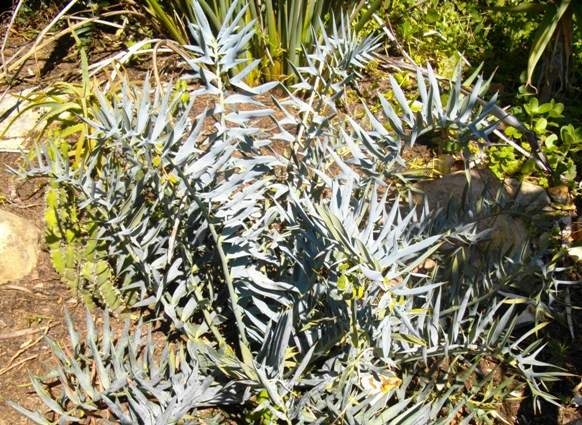Encephalartos horridus

Author: Ivan Lätti
Photographer: Ivan Lätti
Encephalartos horridus, the Eastern Cape blue cycad, is a small dioecious gymnosperm that occurs in two forms, distinguished only by the one being even smaller than the other in leaf and stem length. Plants reach heights from 90 cm to 1 m. A big part of the stem is embedded in the ground. On a branched specimen (the plant grows up to eight stems), the tangled foliage may hide the characteristic Encephalartos feature of a stem-tip rosette.
The species distribution is range-restricted, coastal in the Eastern Cape from around Gqeberha (Port Elizabeth) to Kariega (Uitenhage) and slightly inland.
The habitat is rocky slopes and ridges among karoid scrub in deep loamy and sour soil. The winters are mild here and the rainfall moderate. The hardy plant grows slowly but easily in hot, frost free conditions. The habitat population is deemed endangered early in the twenty first century, due to illegal plant collection (Hugo, 2014; iNaturalist; www.plantzafrica.com; http://redlist.sanbi.org).

